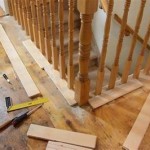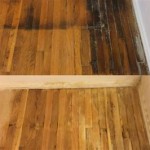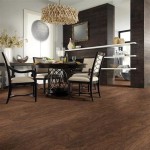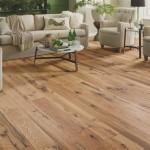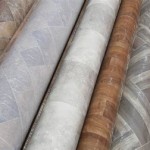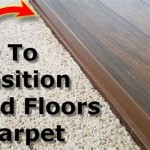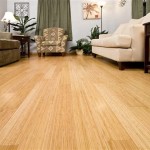Solid Bamboo Flooring: A Comprehensive Overview
Solid bamboo flooring has emerged as a popular alternative to traditional hardwood floors, offering a unique combination of aesthetic appeal, durability, and environmental sustainability. This article provides a comprehensive overview of solid bamboo flooring, exploring its characteristics, benefits, installation, maintenance, and considerations for potential buyers.
Bamboo, technically a grass, is known for its rapid growth rate, making it a renewable resource. Unlike hardwood trees that can take decades to mature, bamboo can be harvested in as little as 3-5 years. This rapid renewability contributes significantly to its appeal as an environmentally responsible flooring option.
Solid bamboo flooring is manufactured by slicing the mature bamboo stalk into strips, which are then kiln-dried to remove moisture. These strips are subsequently glued together under high pressure to form planks or boards. The arrangement of these strips determines the grain pattern and appearance of the final product. The pressure used during the manufacturing process also impacts the hardness and density of the flooring.
The resulting product is a solid, dense material that can be installed using various methods, including nailing, gluing, or floating. Solid bamboo flooring offers a distinct aesthetic, often characterized by a natural, warm tone and a subtle, linear grain pattern. The specific appearance can vary depending on the type of bamboo used and the manufacturing process.
Types of Solid Bamboo Flooring
Solid bamboo flooring is broadly classified into three main types, distinguished primarily by the orientation of the bamboo strips during the manufacturing process. Each type offers a unique aesthetic and varying levels of hardness and durability.
Horizontal Bamboo: This is the most common type of solid bamboo flooring. In horizontal bamboo, the bamboo strips are laid flat and glued together, showcasing the nodes (the knuckles on the bamboo stalk) prominently. This creates a wider grain pattern, giving the floor a more distinct and recognizable bamboo appearance. Horizontal bamboo is generally less dense than vertical and strand woven varieties.
Vertical Bamboo: Vertical bamboo is constructed by orienting the bamboo strips vertically and gluing them together on their edges. This arrangement creates a tighter, more uniform grain pattern with fewer visible nodes. Vertical bamboo is typically denser than horizontal bamboo, offering improved durability and resistance to dents and scratches. The clean lines of vertical bamboo flooring make it a versatile choice for various interior design styles.
Strand Woven Bamboo: Strand woven bamboo is the densest and most durable type. It is created by shredding the bamboo stalks into strands, which are then compressed and bonded together under extreme pressure and heat. This process results in a material that is significantly harder than either horizontal or vertical bamboo, and in some cases, even surpasses the hardness of traditional hardwoods like oak. Strand woven bamboo offers a unique, textured appearance and is highly resistant to wear and tear, making it suitable for high-traffic areas.
Benefits of Choosing Solid Bamboo Flooring
Solid bamboo flooring offers a multitude of benefits that contribute to its rising popularity among homeowners and builders. These benefits range from environmental considerations to aesthetic appeal and practical advantages.
Environmental Friendliness: As previously mentioned, bamboo’s rapid growth rate makes it a highly sustainable resource. Its quick regeneration minimizes the impact on forests and reduces the need for deforestation. Furthermore, some bamboo flooring manufacturers utilize environmentally friendly adhesives and finishes, further reducing the environmental footprint of the product. Choosing bamboo flooring can be a conscious decision toward sustainable building practices.
Durability and Longevity: While the durability of bamboo flooring varies depending on the type, all solid bamboo options offer reasonable resistance to wear and tear. Strand woven bamboo, in particular, is exceptionally durable and can withstand heavy foot traffic and daily use. Properly installed and maintained bamboo flooring can last for decades, providing a long-term flooring solution.
Aesthetic Versatility: Solid bamboo flooring is available in a wide range of colors, finishes, and grain patterns, allowing it to complement various interior design styles. From light, natural tones to darker, stained finishes, bamboo flooring can be tailored to match existing décor and create the desired ambiance. Its unique grain patterns add visual interest and character to any room.
Ease of Maintenance: Bamboo flooring is relatively easy to maintain. Regular sweeping or vacuuming can remove dirt and debris. For deeper cleaning, a damp mop with a pH-neutral cleaner is sufficient. Avoiding excessive moisture and promptly cleaning up spills are crucial for preserving the longevity and appearance of the floor. The smoother surface is also easier to clean. Polishes and waxes can be applied if desired to maintain the sheen of the floor.
Cost-Effectiveness: Solid bamboo flooring often presents a cost-effective alternative to traditional hardwood flooring. While prices can vary depending on the quality, brand, and type of bamboo, it generally falls within a comparable or even lower price range. This affordability, combined with its durability and environmental benefits, makes it an attractive option for budget-conscious homeowners.
Installation and Maintenance Considerations
Proper installation and ongoing maintenance are crucial for maximizing the lifespan and beauty of solid bamboo flooring. Neglecting these aspects can lead to premature wear, damage, and dissatisfaction with the product.
Installation Methods: Solid bamboo flooring can be installed using several methods, including nailing, gluing, and floating. Nailing is typically used for solid planks installed over a wooden subfloor. Gluing involves adhering the planks directly to the subfloor with a specialized adhesive. Floating installation involves interlocking the planks together, creating a “floating” floor that is not directly attached to the subfloor. The choice of installation method depends on the type of subfloor, the specific product, and the installer's preference. It is generally recommended to hire a professional installer to ensure proper installation and avoid potential problems.
Acclimation: Before installation, bamboo flooring needs to acclimate to the room's humidity and temperature. This process allows the wood to adjust to its new environment, minimizing the risk of expansion or contraction after installation. The acclimation period typically lasts for several days, and it is crucial to follow the manufacturer's recommendations.
Subfloor Preparation: A level, clean, and dry subfloor is essential for a successful bamboo flooring installation. Any imperfections in the subfloor can telegraph through to the finished floor, resulting in unevenness or squeaking. Proper subfloor preparation may involve leveling, patching, or sanding the existing surface.
Daily Maintenance: Routine cleaning is vital for preserving the appearance and longevity of bamboo flooring. Regular sweeping or vacuuming removes dirt, dust, and debris that can scratch the surface. A damp mop with a pH-neutral cleaner can be used for deeper cleaning, but it is essential to avoid excessive moisture. Spills should be cleaned up promptly to prevent staining or water damage.
Preventive Measures: Taking preventive measures can further protect bamboo flooring from damage. Using mats at entryways can trap dirt and moisture, reducing the amount of debris that enters the house. Furniture pads can prevent scratches and dents caused by chairs and tables. Controlling humidity levels within the home can also help prevent excessive expansion or contraction of the floor.
Refinishing: Like hardwood floors, solid bamboo flooring can be refinished to restore its original luster or change its appearance. Refinishing involves sanding down the existing finish and applying a new coat of sealant. The number of times a bamboo floor can be refinished depends on the thickness of the wear layer. Strand woven bamboo, with its greater density, may require specialized sanding equipment and techniques.
In conclusion, solid bamboo flooring presents a viable flooring option. Its benefits stem from its environmentally friendly characteristics, aesthetic appeal and ease of maintenance.

What Is The Difference Between Solid And Engineered Bamboo Flooring Company

A Guide To Solid Horizontal And Vertical Bamboo Flooring The Company

Bamboo Carbonized Solid Natural Hardwood Flooring

Vietnam Solid Horizontal Bamboo Flooring For Export And Domestic Market

Waterproof Carbonized Solid Bamboo Floor Tiles Parquet Laminated Indoor Flooring China Made In Com

Home Decorators Collection Strand Woven Harvest 3 8 In T X 4 92 W 36 1 L Solid Bamboo Flooring 24 76 Sqft Case Hl271s The Depot

Floorus Com 3 Horizontal Natural Bamboo Flooring Special Deal

Teragren Solid Pureform Flat Grain Horizontal Narrow Bamboo Flooring

Solid Natural Horizontal 96mm Bamboo Flooring 2 21m² The Company

Bamboo Natural Solid Hardwood Flooring Direct
Related Posts

